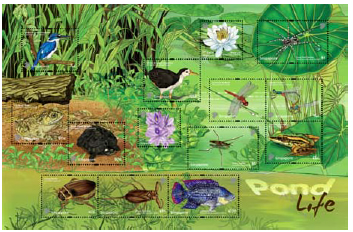Non-target aquatic insects are susceptible to chronic neonicotinoid insecticide exposure during the early stages of development from repeated run-off events and prolonged persistence of these chemicals. Investigations on the chronic toxicity of neonicotinoids to aquatic invertebrates have been limited to a few species, under different laboratory conditions that often preclude direct comparisons of the relative toxicity of different compounds. Here, full life-cycle toxicity tests using Chironomus dilutus were performed to compare the toxicity of three commonly used neonicotinoids: imidacloprid, clothianidin, and thiamethoxam. Test conditions followed a static-renewal exposure protocol where lethal and sub-lethal endpoints were assessed on days 14 and 40. Reduced emergence success, advanced emergence timing, and male-biased sex ratios were sensitive responses to low-level neonicotinoid exposure. The 14-day LC50 values for imidacloprid, clothianidin, and thiamethoxam were 1.52 μg/L, 2.41 μg/L, and 23.60 μg/L, respectively. The 40-day EC50 (emergence) values for imidacloprid, clothianidin, and thiamethoxam were 0.39 μg/L, 0.28 μg/L, and 4.13 μg/L, respectively. Toxic equivalence, relative to imidacloprid, was estimated through a three-point response average at L(E)C(20, 50, 90) and plotted concentration-response curves. Relative to imidacloprid (TEF=1.0), chronic (lethality) 14-day TEFs for clothianidin and thiamethoxam were 1.05 and 0.14, respectively, and chronic (emergence inhibition) 40-day TEFs were 1.62 and 0.11, respectively. These population-relevant endpoints and TEFs suggest that imidacloprid and clothianidin exert comparable chronic toxicity to C. dilutus, whereas thiamethoxam induced comparable effects only at concentrations an order of magnitude higher. However, we caution that under field conditions thiamethoxam readily degrades to clothianidin, thereby likely enhancing toxicity.
Source:
MICHAEL C. CAVALLARO ET AL. (2016) Environmental Toxicology and Chemistry
DOI 10.1002/etc.3536

- Login om te reageren
